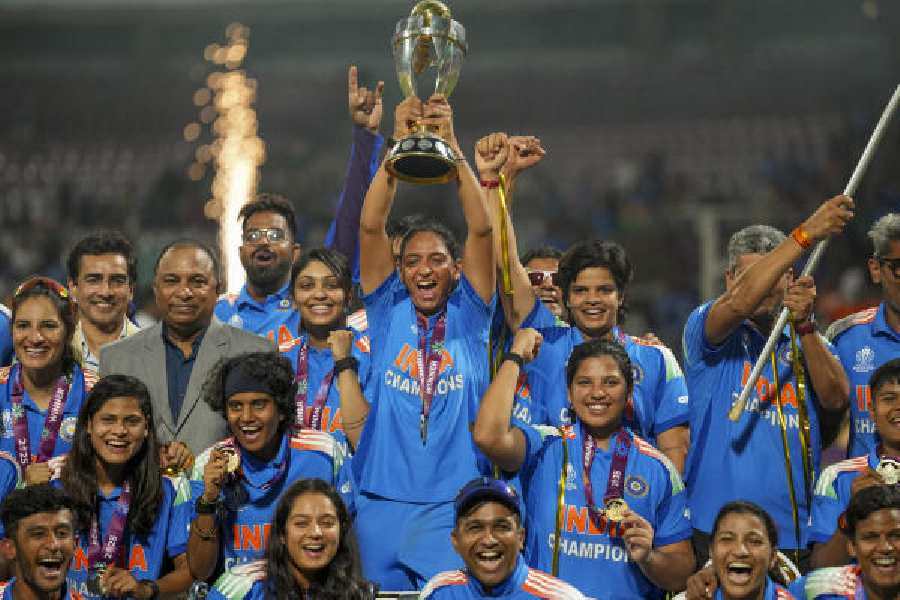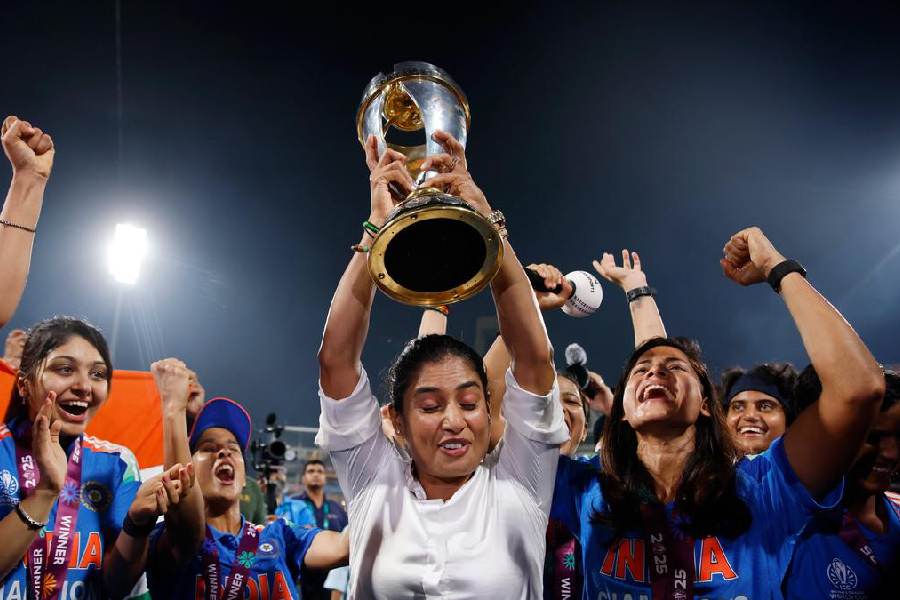 |
 |
 |
| STEADY DOES IT: (From top) Russian tennis star Anna Kournikova; Chinese hockey player Zhou Wanfeng and New Zealand’s Suzie Muirhead locked in combat; Japanese Olympic figure skater Fumi Suguri in rehearsal. Photos: AFP |
The fearful Minotaur of legend wasn’t a monster, half-man half-animal, at all. He actually represented a series of bulls let into an arena whose horns athletic young Cretans, girls and boys in equal number, were trained to dodge or vault over in a sport, demanding extraordinary levels of precision and agility, born in that region. So discovered historical novelist Mary Renault in her research for her book, The King Must Die.
While the Minoan civilisation lasted between 2600 and 1100 years before Christ, by the time the Greeks came up with the idea of the Olympics in BC 776, women were not only banned from the Games but prevented from being spectators. But that was only at the Olympics. Undaunted, Grecian girls blithely held their own annual games dedicated to the goddess Hera.
No such feminist comeback greeted Baron Pierre de Coubertin when he revived the Olympics in 1896, envisioning them as the “solemn and periodic exaltation of male athleticism … with female applause as reward”. For a long while after that, women, dedicated though many of them were to the sporting life, contented themselves with sitting on the sidelines of major games events with a status less than that of cheerleaders (who at least get to perform).
And now, after a chequered pursuit of the ideals of higher, faster, stronger, women have three things to cheer about in Olympics 2004. One: For the first time, there is an (almost) equal representation of men and women at the Games. Two: Women’s wrestling has finally been recognised (even if to the accompaniment of a slew of locker-room jokes). And three: The Games will welcome back a country that was previously banned because of its outright exclusion of women — Afghanistan.
So why do we get to see and hear so little about them? Could it be that sportswomen on the whole are just not up to snuff?
Only a few days after the Games opened in Athens, Kim Sang-Ryul, coach of the South Korean women’s hockey team which lost 3-2 to Germany, resigned, vowing, “Never again will I coach a women’s team.” His reason: he couldn’t get “inside their heads. Boys are not like that.”
Kim is not alone, not even in recent years, to believe that women lack not only the spirit for sport but that their flesh is correspondingly weak. In 2003 Fijian golfer Vijay Singh took umbrage when the Swede, Annika Sorenstam, was invited to compete in a man’s tournament in Fort Worth, Texas. He ridiculed the competition by opting out of it, saying he had promised his wife to take her shopping instead.
It was Colette Dowling, in 2000, who pointed at what she believed was a vast conspiracy to keep women off the sports arena. In her book The Frailty Myth, she blamed a culture of misogyny, parents and teachers who pander to stereotypes, a media which rewards women for looking fragile and laughs at them when they display strength, and marginalised men who clung to the playing fields as the last bastion of superior muscular strength.
Strength, therefore, is what Dowling urges women to acquire, whether through exercise, self-defence classes or vigorous participation in sports. And yet, to pretend that women’s bodies carry as much power as those of men is kind of pushing it. In terms of physiology, men are genetically predisposed to have more strength than women. As Richard Cotton, one-time spokesman for the American Council on Exercise puts it, “Venus Williams is a big girl, but she still couldn’t take on Pete Sampras.”
But that, argues US journalist Emily Jenkins, is because the sports we play are almost all designed for men. What we need, she says, “are new sports (which conform to a woman’s natural body shape and skills) and more media coverage”. Women endure longer, withstand cold better and float really well. Women have excelled at distance sports (in 2000, Emma Richards skimmed around the globe faster than any male sailor has ever done) but how long can they sustain the interest of television cameras?
So what do we do? Fling ourselves over the Niagara Falls in a barrel as 43-year-old Annie Taylor did in 1901, the first person to survive the act? Box, like Jessica Hudson, for Cambridge? Or go the way of Brandi Chastain who whipped off her shirt after the 1999 American women footballers’ win over China, delighting viewers the world around? (The American players went on to endorse everything from Nike products to Chevrolet and Budweiser.)
No, we can’t perhaps go entirely the girlie way. But we could start with the kind of American law that prohibited discrimination in the funding of sporting activities. The legislation forced a change in attitudes and brought the money to make it possible for female students to access all sports. If we had it, our Anju Bobby Georges would have no more difficult a time of it than our Rajyavardhan Singh Rathores.











